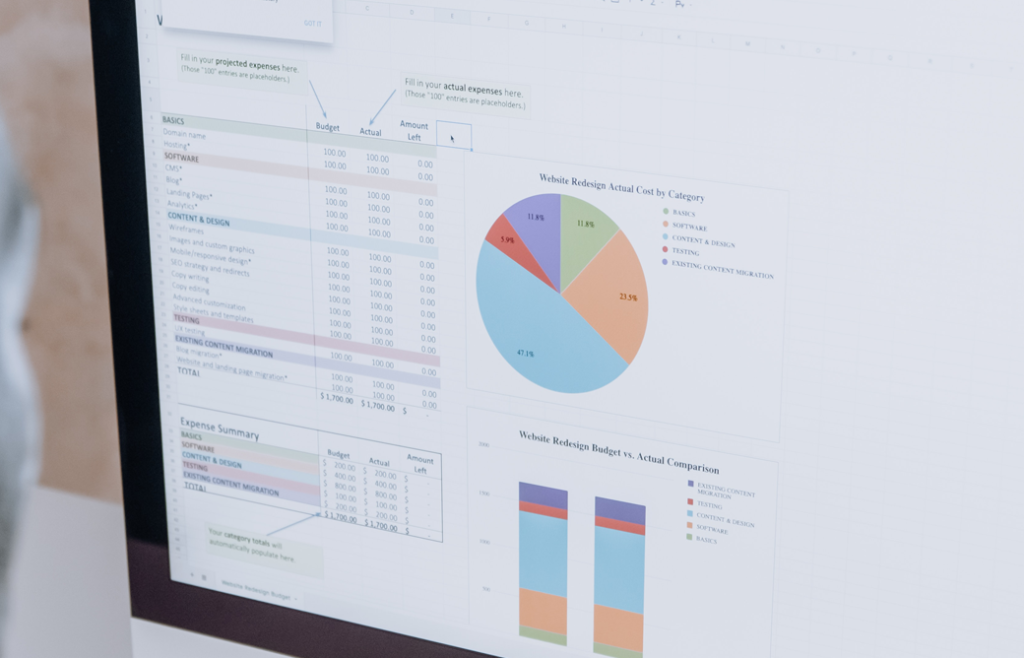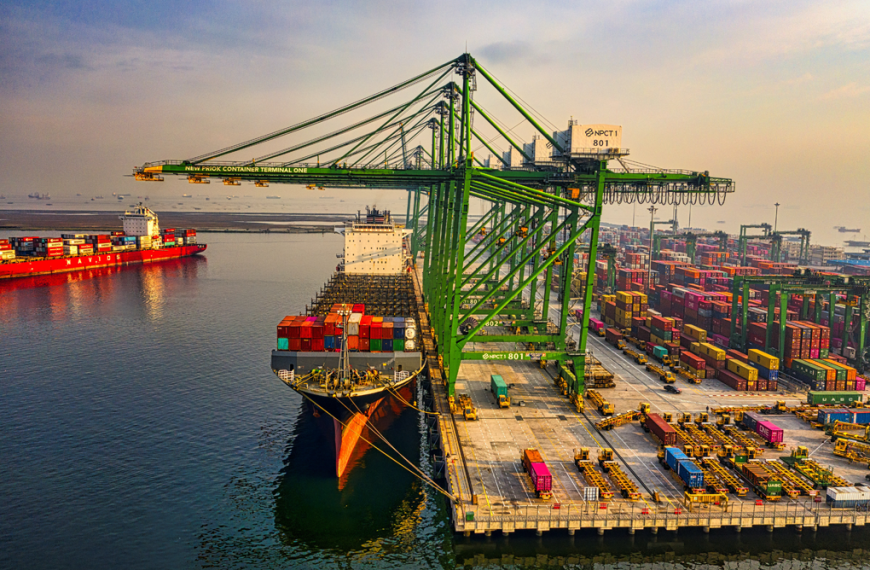If you’re in the business of company logistics, freight forwarding, air freight, or sea freight, you know that success depends on being able to measure and track your performance. This is where Key Performance Indicators (KPIs) come into play. By using KPIs, you can gain a better understanding of your business and make more informed decisions about how to improve it.
- Why is it important to measure and monitor KPIs?
- Time and Tracking based KPIs
- Freight Rates based KPIs
- KPIs based on Internal Business Operations
- Impact of Digitization on Freight Forwarding
- 7 Metrics Freight Forwarders should analyze
- Related Articles
- 5 Key Sales Metrics in Freight Forwarding And How to Improve Them
- Frequently Asked Questions (FAQs)
- Related Articles
Why is it important to measure and monitor KPIs?
Measuring and monitoring KPIs is essential for a successful freight forwarding business. KPIs help you identify areas of your business that need improvement, and they provide you with actionable insights that can help you make data-driven decisions. Without KPIs, you may not have a clear picture of your business’s performance, and you could be missing out on opportunities to improve.

Time and Tracking based KPIs
Time is a critical factor in freight forwarding. That’s why KPIs that measure time and tracking are essential. On-time delivery is a key metric for measuring your business’s performance. You can also track the time it takes to process orders, load and unload shipments, and complete other essential tasks. By measuring these metrics, you can identify bottlenecks in your processes and work to improve them.
Time and tracking are essential components of any successful freight forwarding operation. After all, if you can’t keep tabs on your shipments, you won’t be able to deliver them on time or provide your clients with the information they need. Here are a few KPIs you should consider tracking in this area:
- Transit Time: How long does it take for your shipments to reach their destinations? Tracking your average transit time can help you identify inefficiencies in your shipping process and work to improve them.
- On-Time Delivery: Are you meeting your clients’ delivery deadlines? This KPI can help you ensure that you’re providing top-notch service to your customers.
- Shipment Tracking Accuracy: How accurate is your tracking information? If you’re providing inaccurate or incomplete tracking data, your clients may lose trust in your ability to deliver.
Freight Rates based KPIs
Freight rates are a significant expense for any freight forwarding business. That’s why it’s essential to track and measure your freight rates KPIs. You can track your average freight rates, monitor changes in rates over time, and compare your rates to industry averages. By analyzing these metrics, you can identify opportunities to reduce your costs and improve your profitability.
How Freight Forwarders Can Optimize Freight Rates Using KPIs
As a company logistics provider, managing freight rates is a critical part of your business. Freight forwarding involves the transportation of goods through different modes of transportation such as air freight, sea freight, and road transportation. To ensure profitability, freight forwarders need to have an understanding of the market rates, negotiate with carriers, and maintain efficient business operations. This is where Key Performance Indicators (KPIs) come into play. In this article, we’ll discuss how freight forwarders can optimize their freight rates using KPIs.
Freight Cost per Shipment
The first KPI that freight forwarders should track is the freight cost per shipment. This metric helps you determine the cost of transporting a shipment from origin to destination, including all related costs such as customs duties and handling charges. By tracking this KPI, you can identify opportunities to reduce costs and improve your bottom line. For example, you could analyze shipping volumes to negotiate better rates with carriers or optimize your routes to reduce transportation costs.
Freight Rate Trends
Another important KPI for freight forwarders is freight rate trends. This metric helps you stay ahead of the market and adjust your pricing strategies as needed. By tracking rate trends over time, you can identify patterns and adjust your rates accordingly. For example, if rates are trending upwards, you may need to increase your prices to maintain profitability.
Carrier Performance
The third KPI that freight forwarders should track is carrier performance. Working with reliable carriers who provide competitive rates is essential to your business. By tracking carrier performance metrics, you can identify the best partners for your business. For example, you could track carrier on-time delivery rates, transit times, and claims ratios to ensure you’re working with carriers who can meet your business needs.

KPIs based on Internal Business Operations
KPIs based on internal business operations can help you identify areas of your business that need improvement. For example, you can track your inventory turnover rate, which measures how quickly you sell your inventory. You can also track your warehouse utilization rate, which measures how efficiently you use your warehouse space. By measuring these metrics, you can identify areas where you can improve your business’s efficiency and profitability.
How to Improve Freight Forwarding Operations with Internal KPIs
As a company logistics provider, freight forwarding is a vital part of your business. To optimize your operations and ensure you’re meeting customer expectations, it’s essential to track Key Performance Indicators (KPIs) related to your internal business operations. In this article, we’ll discuss some of the KPIs that freight forwarders should track to improve their operations and stay ahead of the competition.
On-time Delivery Rate
One of the most important KPIs for freight forwarders is the on-time delivery rate. This metric measures the percentage of shipments that arrive at their destination on time. Tracking this KPI can help you identify areas where your operations may be falling short and allow you to take corrective action. For example, if you notice that your on-time delivery rate is low for a particular destination, you may need to adjust your routing or work with carriers who can offer more reliable transit times.
Order Processing Time
Another critical KPI for freight forwarders is order processing time. This metric measures the time it takes to process an order, from the time the order is received until it is ready for shipment. By tracking this KPI, you can identify bottlenecks in your order processing system and take steps to streamline your operations. For example, you may need to invest in new software or hire additional staff to improve efficiency.
Inventory Turnover Ratio
The inventory turnover ratio is another KPI that can provide valuable insights into your business operations. This metric measures how quickly you’re able to sell your inventory and replace it with new products. A low inventory turnover ratio could indicate that you’re carrying too much inventory, which can tie up cash and impact profitability. By tracking this KPI, you can identify opportunities to optimize your inventory levels and improve your bottom line.
Conclusion
In the freight forwarding industry, tracking KPIs related to your internal business operations is crucial to staying competitive and meeting customer expectations. By monitoring KPIs such as on-time delivery rate, order processing time, and inventory turnover ratio, you can identify areas for improvement and take corrective action to optimize your operations. At the same time, it’s essential to stay proactive and always be looking for ways to improve your business operations. By leveraging the power of internal KPIs, freight forwarders can keep their business on track for success.

Impact of Digitization on Freight Forwarding
Digitization has revolutionized the freight forwarding industry. By using digital tools and technologies, you can streamline your business processes, improve your efficiency, and reduce your costs. Digitization has also made it easier to track and measure KPIs. You can use software to automate the tracking of KPIs, which can save you time and provide you with more accurate data.

7 Metrics Freight Forwarders should analyze
As a freight forwarder, it’s essential to stay on top of your business metrics to ensure you’re meeting customer expectations, optimizing your operations, and staying ahead of the competition. In this article, we’ll discuss seven key metrics that freight forwarders should analyze to achieve success.
1. Transit Time
Transit time is the amount of time it takes for a shipment to move from the origin to the destination. This metric is crucial for freight forwarders to track because it directly impacts customer satisfaction. By analyzing transit time data, you can identify areas where your operations may be falling short and take corrective action to improve efficiency and reliability.
2. On-Time Delivery Rate
Another essential metric for freight forwarders is the on-time delivery rate. This metric measures the percentage of shipments that arrive at their destination on time. Tracking this KPI can help you identify areas where your operations may be falling short and allow you to take corrective action. For example, if you notice that your on-time delivery rate is low for a particular destination, you may need to adjust your routing or work with carriers who can offer more reliable transit times.
3. Cost per Shipment
Freight forwarding is a competitive industry, and optimizing your costs is critical to success. By tracking your cost per shipment, you can identify areas where you may be overspending and take corrective action. For example, you may need to negotiate better rates with carriers or work with more efficient logistics providers.
4. Load Factor
Load factor is the percentage of available cargo space that is actually being utilized. A high load factor indicates that you’re making the most of your cargo space and maximizing profitability. By tracking load factor, you can identify areas where you may be underutilizing your cargo space and take corrective action.
5. Customer Retention Rate
Customer retention rate is the percentage of customers who continue to do business with you over a given period. This metric is critical for freight forwarders because it indicates how well you’re meeting customer expectations and building long-term relationships. By analyzing customer retention data, you can identify areas where you may be falling short and take corrective action to improve customer satisfaction.
6. Claims Ratio
Claims ratio is the percentage of shipments that result in a claim for loss or damage. By tracking this metric, you can identify areas where you may be experiencing issues with loss or damage and take corrective action. For example, you may need to work with carriers who offer better cargo protection or invest in better packaging materials.
7. Employee Turnover Rate
Employee turnover rate is the percentage of employees who leave your company over a given period. This metric is essential because it impacts your ability to maintain consistent service levels and build a strong team. By tracking employee turnover data, you can identify areas where you may need to improve employee satisfaction and retention.
| Metric | Description |
|---|---|
| On-time delivery | The percentage of shipments that are delivered on or before the expected delivery date. This metric is critical for customer satisfaction and can help identify potential issues in the supply chain. |
| Freight cost per unit | The cost of shipping per unit of goods transported. This metric helps identify inefficiencies in the supply chain, such as higher-than-average costs for certain routes or modes of transportation. |
| Transit time | The amount of time it takes for a shipment to travel from origin to destination. This metric is essential for managing customer expectations and identifying bottlenecks in the supply chain. |
| Order accuracy | The percentage of orders that are delivered without errors or discrepancies. This metric is critical for maintaining customer satisfaction and can help identify issues with inventory management and order fulfillment processes. |
| Inventory accuracy | The percentage of inventory items that are accurately recorded and available for shipment. This metric helps identify issues with inventory management processes and can lead to more efficient supply chain operations. |
| Carrier performance | The percentage of shipments delivered by a particular carrier on-time and without damage. This metric helps identify which carriers are performing well and which ones may need to be replaced. |
| Capacity utilization | The percentage of total freight capacity that is being used. This metric helps identify areas where capacity is underutilized, which can lead to cost savings and more efficient operations. |
By analyzing these metrics, you can gain a better understanding of your business’s performance and identify areas where you can improve.
Related Articles
5 Key Sales Metrics in Freight Forwarding And How to Improve Them
Sales are an essential part of any freight forwarding business. Here are five key sales metrics that you should track:
- Sales revenue
- Gross profit margin
- Sales conversion rate
- Customer lifetime value
- Sales per employee
Freight forwarding is a complex and competitive industry, and to stay ahead of the game, companies need to constantly analyze and improve their sales strategies. To do that, they need to measure and track the right metrics. In this article, we’ll discuss the five key sales metrics that freight forwarders should analyze, and provide tips on how to improve them.
- Customer Acquisition Cost (CAC)
CAC is the cost incurred to acquire a new customer. This metric is important for freight forwarders because it helps them understand the efficiency of their sales and marketing efforts. To calculate CAC, divide the total sales and marketing costs by the number of new customers acquired during the same period.
To improve CAC, companies should focus on targeting the right audience, improving their sales pitch, and streamlining their sales and marketing processes.
- Conversion Rate
Conversion rate is the percentage of prospects that become paying customers. This metric is crucial for freight forwarders because it measures the effectiveness of their sales team and their ability to convert leads into customers. To calculate conversion rate, divide the number of sales by the number of leads.
To improve conversion rate, companies should analyze their sales process and identify areas where leads are being lost. This could be due to poor follow-up, lack of communication, or a weak value proposition. By addressing these issues, companies can improve their conversion rate.
- Average Deal Size
Average deal size is the average value of a sale. This metric is important for freight forwarders because it helps them understand the revenue potential of each customer. To calculate average deal size, divide the total revenue by the number of sales.
To improve average deal size, companies should focus on upselling and cross-selling. This could involve offering additional services or bundling services together to increase the value of each sale.
- Sales Cycle Length
Sales cycle length is the amount of time it takes to close a sale. This metric is important for freight forwarders because it helps them understand the efficiency of their sales process. To calculate sales cycle length, measure the time from when a lead is generated to when the sale is closed.
To improve sales cycle length, companies should focus on reducing the time it takes to move leads through the sales process. This could involve improving communication, providing timely follow-up, and streamlining the sales process.
- Customer Lifetime Value (CLV)
CLV is the total revenue a customer is expected to generate over the course of their relationship with a company. This metric is important for freight forwarders because it helps them understand the long-term value of each customer. To calculate CLV, multiply the average deal size by the number of repeat transactions and the length of the customer relationship.
To improve CLV, companies should focus on providing excellent customer service, building long-term relationships, and identifying opportunities for repeat business.
| Metric | Description | How to Improve |
|---|---|---|
| Sales Growth Rate | Measures the percentage increase or decrease in sales over a specific period. | Expand sales territories, introduce new products or services, focus on marketing efforts, and provide excellent customer service. |
| Conversion Rate | Measures the percentage of leads that turn into paying customers. | Improve the quality of leads, optimize the sales process, offer incentives to close deals, and train sales representatives. |
| Average Revenue per Customer | Measures the average amount of revenue generated per customer. | Increase product or service offerings, upsell and cross-sell to existing customers, and provide value-added services. |
| Customer Lifetime Value | Measures the total revenue expected from a customer throughout their relationship with the company. | Focus on building long-term relationships with customers, provide excellent customer service, and offer loyalty programs. |
| Sales Pipeline Coverage Ratio | Measures the ratio of the value of the sales pipeline to the revenue target. | Increase the number of high-quality leads, improve the sales process, and set realistic revenue targets. |
By monitoring and improving these key sales metrics, freight forwarding companies can optimize their sales strategies and improve their overall business performance.

In conclusion, analyzing and improving these key sales metrics can help freight forwarders optimize their sales strategies and stay ahead of the competition. By focusing on customer acquisition, conversion rate, average deal size, sales cycle length, and customer lifetime value, companies can improve their revenue and profitability.
To improve these metrics, you can focus on improving your sales processes, offering exceptional customer service, and investing in marketing and advertising.
In conclusion, tracking and measuring KPIs is essential for a successful freight forwarding business. By analyzing these metrics, you can identify areas where you can improve your efficiency, reduce your costs, and increase your profitability. With the help of digitization and technology, you can automate the tracking of KPIs and gain
Frequently Asked Questions (FAQs)
What is the KPIs in freight forwarding?
KPIs, or key performance indicators, in freight forwarding are measurable values that indicate how well a company is achieving its goals and objectives. These KPIs can include metrics related to time, cost, quality, and customer satisfaction, among others. By tracking these KPIs, freight forwarding companies can identify areas for improvement and make data-driven decisions to optimize their operations.
What are the 5 key performance indicators in logistics?
The 5 key performance indicators in logistics include on-time delivery, order accuracy, inventory turnover, cost per order, and customer satisfaction. On-time delivery measures the percentage of shipments that arrive on schedule, while order accuracy measures the percentage of orders that are filled correctly. Inventory turnover measures how quickly inventory is sold and replaced, while cost per order measures the cost of fulfilling an order. Customer satisfaction measures how well a company meets its customers’ needs and expectations.
What metrics and benchmarks would you establish to measure success in transportation?
To measure success in transportation, metrics and benchmarks that could be established include on-time delivery rate, freight damage rate, carrier utilization rate, transportation cost per unit, and customer satisfaction. On-time delivery rate measures the percentage of shipments that arrive on schedule, while freight damage rate measures the percentage of shipments that are damaged during transport. Carrier utilization rate measures how effectively carriers are being utilized, while transportation cost per unit measures the cost of transportation per unit of goods. Customer satisfaction measures how well a company meets its customers’ transportation needs and expectations.
What are the most relevant KPIs for measuring the maritime logistics performance?
The most relevant KPIs for measuring the maritime logistics performance include on-time arrival percentage, cargo damage rate, vessel utilization rate, port turnaround time, and customer satisfaction. On-time arrival percentage measures the percentage of shipments that arrive on schedule, while cargo damage rate measures the percentage of cargo that is damaged during transport. Vessel utilization rate measures how effectively vessels are being utilized, while port turnaround time measures the time it takes for a vessel to unload and reload at a port. Customer satisfaction measures how well a company meets its customers’ maritime logistics needs and expectations.













